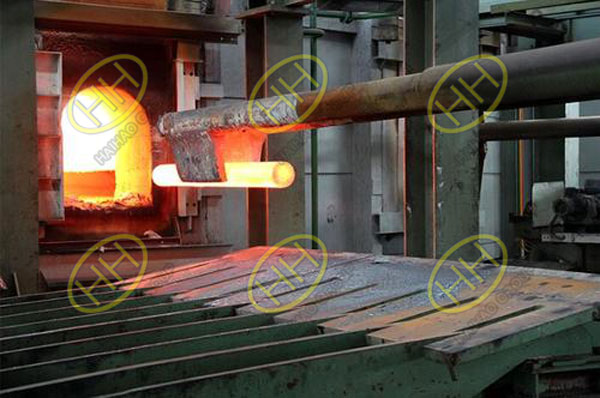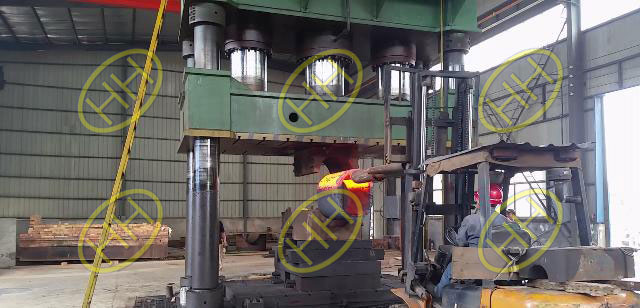What are the methods of heat treatment for forgings?
According to different types of steel and process requirements, the following heat treatment methods are often used for forgings: annealing, normalizing, tempering, quenching and low temperature tempering, quenching and aging, etc.Let’s take a look at the results:
1. The annealing:
The forging annealing process has many forms such as complete annealing, spheroidizing annealing, low temperature annealing and isothermal annealing, which need to be selected according to the material and deformation of the forging.
After annealing, the recrystallization refines the grain, eliminates or reduces the residual stress, thus reducing the hardness of the forgings, improving their plasticity and toughness, and improving the cutting performance.
2. The normalized:
Normalizing is generally the forgings heated to 50-70℃ above the GSE line, and some high alloy steel forgings heated to 100-150℃ above the GSE line, and then cooled in the air after appropriate insulation.If the hardness of the forgings is high after normalizing, in order to reduce the hardness of the forgings, high temperature tempering should also be carried out, the general tempering temperature is 560-660℃.
3. Quenching and tempering:
Quenching is to obtain an unbalanced structure to improve strength and hardness.Heat the steel forgings to 30-50 ° C above line AC1. After heat preservation, it is rapidly cooled.
Tempering is to eliminate the quenching stress and obtain a more stable organization. The forging is heated to a certain temperature below the AC1 line, kept warm for a period of time, and then air-cooled or fast-cooled.
4. Quenching and aging:
High temperature alloys and alloys that can be strengthened by heat treatment are often treated by quenching and aging after forging.Among them, quenching is to heat the alloy to an appropriate temperature, after sufficient heat preservation, so that some of the tissue products of the alloy are dissolved into the matrix to form a uniform solid solution, and then rapidly cooled to become a supersaturated solid solution, so it is also called solid solution treatment.The purpose is to improve the plasticity and toughness of the alloy and to prepare the microstructure for further aging treatment.The aging treatment is to place the supersaturated solid solution or the alloy deformed by cold working at room temperature or heated to a certain temperature for a period of time, so that the material previously dissolved in the matrix can precipitate evenly and dispersefully. The purpose of aging treatment is to increase the strength and hardness of the alloy.


